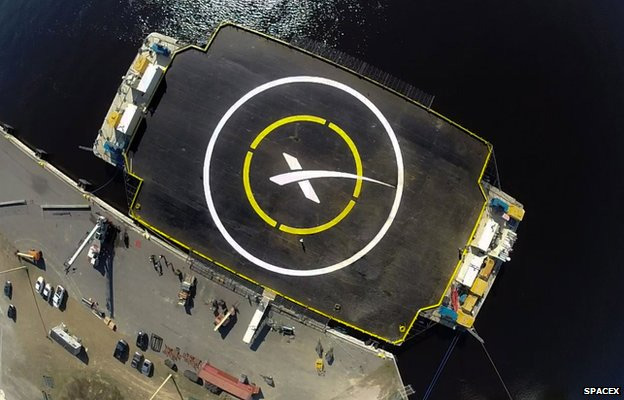One of the biggest reasons that rocket launches are so expensive, is that most parts of the initial boost stages aren't recoverable. They separate in our atmosphere as the next engines engage, and fall back to earth – but not so on Space X's Falcon 9 craft. Today, at 11:20 GMT (6:20 local Florida time) the fledgling space firm will send a cargo payload to the International Space Station using the Falcon 9 booster and will attempt to soft land that initial stage on a sea-barge after separation.
This is the same test that was initially set to take place in mid-December last year but was ultimately pushed back to this January. Chances of success are still not particularly high, with Space X believing there is around a 50-50 chance it will be able to land the rocket stage successfully. If it does however, it will offer the firm a considerable saving on the rocket launch, making certain aspects of space travel far more economical and therefore more viable.
Update: Elon Musk himself has since said that the 50-50 chance of success was entirely made up. He has no idea whether it's going to work or not.
While it might seem wasteful to dump engines and empty fuel tanks when heading into space, as any KSP player will tell you, you don't want to be hauling all of that extra weight (of the engines themselves and the fuel tank material) when you don't need to. Space flight is all about efficiency so ditching added weight can make a huge difference to the distance a rocket can travel and its power. Of course though, this does mean a lot of amazing technology is simply discarded and must be rebuilt or replaced after every launch.
Not so if SpaceX's mission is a success. The Falcon 9 rocket stage will detach from the payload and its smaller propellant system, with some fuel left and the ability to re-ignite its engine to slow its descent onto the SpaceX automated barge. It even comes with fins and landing struts to make the descent more controlled and the landing softer.
As the BBC reports, the best SpaceX has demonstrated so far is the ability for the rocket to hover over the ocean, before shutting down the engines and impacting the water in a manner that practically destroys all usable materials. With a barge in place however, a much softer landing should be possible.
Whether it works or not though, chances are the astronauts aboard the International Space Station will be pleased to receive the supplies, as the last attempted cargo run there met with disaster when Orbital Sciences Corporation's freighter exploded just seconds after launch last October.
Discuss on our Facebook page, HERE.
KitGuru Says: This sounds like a good KSP challenge. Someone get on to Scott Manley – it's time to build a rocket-return sea barge.
 KitGuru KitGuru.net – Tech News | Hardware News | Hardware Reviews | IOS | Mobile | Gaming | Graphics Cards
KitGuru KitGuru.net – Tech News | Hardware News | Hardware Reviews | IOS | Mobile | Gaming | Graphics Cards



